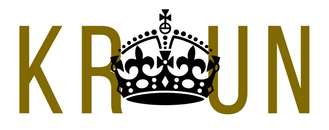Implementation Epidemiology Part I: Building a Framework
As a public health professional, I consider myself an implementation epidemiologist and health equity innovator/champion. My education as a Master of Public Health in epidemiology, and my nearly 7 years of professional experience and training in infectious disease surveillance, health disparities research, chronic disease surveillance, health equity, and public health communications have taught me to take these assertions of my skills seriously. The assertion that I am an implementation epidemiologist is very new to the field. Very new. In fact, I don’t know anyone who currently refers to themselves as such. I do know that there are lots of epidemiologists that work within and champion implementation science. Which, is a field I think we are quite useful in. Knowing this, I always wondered why we didn’t expand our definitions of who an epidemiologist is and what we can do in implementation. Thus, I’ve coined the term. Maybe it will stick to the field. Maybe it won’t. It’s certainly the professional identity I’ve taken on. And why not? There are infection control epidemiologists, pharmaceutical epidemiologists, medical epidemiologists, infectious disease epidemiologists, field epidemiologists, molecular epidemiologists, cancer epidemiologists, veterinary epidemiologists, social epidemiologists, chronic disease epidemiologists, and a host of others. So, why can’t there be implementation epidemiologists that go beyond data surveillance and analysis of disease and build, implement, and evaluate sustainable public health interventions?
To be clear, when I assert myself as such, I am simply stating that I value the investigation of infectious and chronic disease while also understanding the fervent need to translate data into actionable interventions. Interventions that are respectful of the field of epidemiology and build a foundation on health equity that allows it to thrive and expand. That’s it. It’s quite simple.
Lately, I’ve gotten several questions on social media and in my personal, and professional lives about what my professional tags mean and how I arrived here. So, I’ll be doing a three-part series on it. The series will encompass what my training was like, the foundational frameworks that shape my thinking, my goals, how I implement these frameworks, and what qualifies me as an implementation epidemiologist and health equity innovator/champion. But first, let’s build some of that framework before we dive into my education and training. Let’s flush out a few definitions. I won’t go into the complexities of every type of epidemiologist there is. However, I’ll seek to help you understand the areas of the field that have shaped my work and helped me arrive at this place. Let’s begin.
So, what is epidemiology? The Association of Schools & Programs of Public Health describes epidemiology as the following:
“the study of trends, patterns, and causes related to disease in populations. [Epidemiologists] are interested in how diseases spread among given populations. Epidemiologists create complex analytical models to help us understand the causes of and solutions to these diseases more clearly” (ASPPH, n.d.).
Basically, epidemiologists study diseases, infectious and noninfectious, and determine ways to stop those diseases from spreading and or diminishing their effects on the population. At the core of every epidemiologist, this is what we do.
Taking this a step further, I have always been interested in cancer epidemiology. I saw its effects very early on in my life through my grandmother’s cancer diagnosis. I’ll talk in more detail about this in part two, but this branch of epidemiology has also shaped my work. Cancer epidemiology takes the basic principles of the field, studying determinants, incidence, morbidity, and mortality of noninfectious diseases, and applies it specifically to oncology. This helps determine trends in cancer across geographic regions, racial, ethnic, and gender groups, as well as helps identify disparities. We’ll also talk more on disparities when I address the health equity piece of my professional life/brand, but being able to track these things is vitally important to additional investigation into barriers that drive disparities and perpetuate inequities.
Stepping yet a little further into the ocean of the field, social epidemiology digs a little deeper into those disparities and inequities I mentioned. That is, social epidemiology focuses on the social, political, and systemic factors/determinants that influence population health (Honjo, 2004). Social epidemiology seeks to understand those drivers and how to improve them to improve health. More on that later.
Each of these branches of epidemiology have shaped my thinking and public health practice. They have shown up time and again in my professional life and it has benefitted me greatly to be able to name them in spaces where not much is known of either. While there are additional frameworks that guide the intricacies of my work, these are the overarching themes that are key tenants to the building of my stance as an implementation epidemiologist. With knowledge of these, it was easy for me to apply the principles of implementation science to this field.
Pause: implementation science is the study of understanding how research can be translated into meaningful interventions for policymakers to build legislation upon and for practitioners to implement in practice (University of Washington, n.d.). It is a new science, which should help you understand why implementation epidemiology may not have caught fire, yet.
Thus, understanding the nuances of each branch of epidemiology and marrying those with implementation science is where I’ve landed and I’m excited to take you on my journey. But, again, more on all of this later. Stay tuned for part two.
Sources:
1. Association of Schools and Programs of Public Health . (n.d.). Study. ASPPH. https://www.aspph.org/study/epidemiology/.
2. Honjo K. (2004). Social epidemiology: Definition, history, and research examples. Environmental health and preventive medicine, 9(5), 193–199. https://doi.org/10.1007/BF02898100
3. University of Washington. (n.d.). What is Implementation Science? Implementation Science at UW. https://impsciuw.org/implementation-science/learn/implementation-science-overview/.

